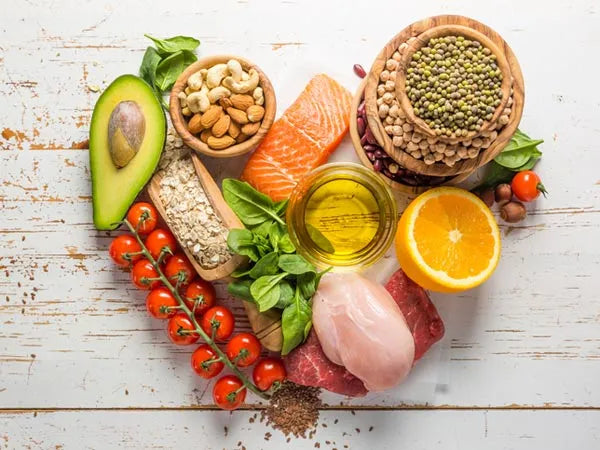Embarking on the Hormozi Diet journey? Prepare to embrace simplicity, flexibility, and a bit of math (don't worry, it's not the scary kind). Let's break down the specific rules to follow this diet effectively.
Step 1: Set Your Fitness Goal
First things first, you need to know where you're heading:
- Muscle Gain: If you're aspiring to be the next Hulk (sans green skin), this is your path.
- Fat Loss: For those looking to slim down, this is your lane.
- Maintenance: Happy with where you are? Stick to maintaining your current physique.
Step 2: Calculate Your Caloric Intake
Time to play with numbers. Your daily caloric intake depends on your body weight and your goal.
-
Identify Your Coefficient: This is a number that multiplies with your body weight to give you your daily caloric needs. It varies depending on your goal. Start in the middle sections and adjust accordingly:
- 21-19 Extreme Weight Gain
- 18-16 Muscle Gain
- 15-13 Maintenance
- 12-10 Fat Loss
- 9-7 Extreme Weight Loss
-
Do the Math: Multiply your body weight (in pounds) by the chosen coefficient. For instance, if you weigh 180 pounds and are aiming for muscle gain, you might choose a coefficient of 15. So, 180 x 15 = 2,700 calories per day.
Step 3: Calculate Your Protein Intake
Protein is the star of this diet, so give it the spotlight it deserves.
- Simple Rule: Consume approximately 1 gram of protein per pound of your body weight. So, if you weigh 180 pounds, aim for 180 grams of protein daily.
- Convert to Calories: Since each gram of protein equals 4 calories, multiply your protein grams by 4. For a 180-pound individual, 180g of protein equals 720 calories.
Step 4: Calculate Remaining Caloric Allowance
This is where flexibility enters the stage.
- Subtract Protein Calories from Total: From your total daily caloric intake, subtract the calories accounted for by protein. Continuing with our example, if your total is 2,700 calories and protein takes up 720 calories, you have 1,980 calories left (2,700 - 720 = 1,980).
- Allocate Remaining Calories: These calories can be split between carbohydrates and fats. Remember, carbs and proteins contain 4 calories per gram, while fats contain 9 calories per gram.
Step 5: Plan Your Meals
With your calculations in hand, plan your meals around your protein intake first, and then fill in the rest with carbs and fats.
- Prioritize Lean Protein: Elk, deer, chicken, turkey, fish, and lean beef are great choices.
- Balance with Carbs and Fats: Whole grains, fruits, vegetables, nuts, and seeds can be used to meet the remaining calorie requirements.
Step 6: Embrace Flexibility
The beauty of this diet is its adaptability. While it's important to stick to your caloric and protein goals, how you meet them can vary daily. This flexibility allows you to enjoy social meals and occasional indulgences, as long as they fit within your calorie framework.
Step 7: Measuring Progress and Making Adjustments
When following the diet, measuring progress isn't just about watching the numbers drop on the scale. It's about understanding your body's response to the diet and adjusting accordingly. Here’s how you can keep tabs on your progress and make necessary tweaks:
-
Weekly Weigh-Ins: Yes, the scale is still a useful tool, but it shouldn't be the only one. Weigh yourself at the same time each week for consistency.
-
Body Measurements: Every couple of weeks, take measurements of your waist, hips, chest, and other areas of interest. Muscle gains or fat loss might be more apparent here than on the scale.
-
Strength and Stamina: Keep track of your workout performance. Are you lifting heavier? Running longer? Improved performance can be a sign of progress.
-
Energy Levels and Well-being: Notice how you feel. Are you more energetic? Do you sleep better? Your general well-being is a great indicator of how well the diet suits you.
-
Visual Progress: Don't underestimate the power of a good selfie. Regular progress photos can be incredibly motivating and informative.
Step 7: Adjusting the Diet: The Art of Tweaking
As you monitor your progress, you may find that adjustments to the diet are necessary. Here’s how to tweak it:
-
Caloric Adjustment: If you're not losing weight or gaining muscle as intended, reassess your caloric intake. Step up or down to the next number and recalculate your macros.
-
Protein Reassessment: Are you meeting your protein goals? If not, consider increasing your intake, especially if you're aiming for muscle gain.
-
Macronutrient Ratios: If you feel low on energy, perhaps adjust the ratio of carbohydrates and fats. Increasing carbs can be particularly beneficial for those with high-energy workouts.
-
Meal Timing and Frequency: Some people thrive on three meals a day, others do better with five or six smaller meals. Experiment to see what works best for you.
-
Dietary Variety: If boredom is setting in or you're experiencing cravings, introduce new foods into your diet while keeping within your caloric and macronutrient goals.
-
Supplementation: If you're consistently feeling low on energy or find certain nutritional gaps, consider adjusting your supplements.
Final Thoughts: Consistency is Key
Like any diet, the Hormozi Diet requires consistency and patience. Track your progress, adjust as needed, and remember, it's not just about the numbers on the scale, but also about how you feel and perform. Happy dieting!


1 comment
I like this diet. But from what I gathered in his vidoes, he just eats a bunch of noodles, chicken, and 7 tubs of ice cream a day? :)